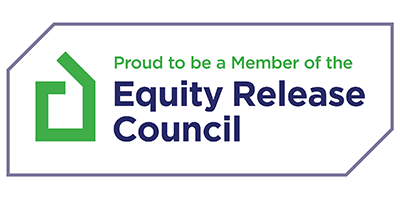In this article
Whether you’re just starting out with property investment or you’ve already got a few rental homes under your belt, there are always new questions that come up.
Some are more common than others, but that doesn’t make them any less important. Here’s a closer look at the kind of questions landlords regularly face when navigating the world of buy-to-let mortgages.
Does a Buy to Let Mortgage Affect Your Personal Mortgage?
Yes, it can affect both your current and future residential mortgage position.
If you already have a residential mortgage, taking out a buy-to-let mortgage adds to your overall credit commitments.
Lenders keep a close eye on your full borrowing profile, so even if the buy-to-let mortgage is paid for through rental income, the loan still appears on your credit file and may be considered if you remortgage your main home in future.
For those planning to apply for a residential mortgage while holding a buy-to-let, the impact can be even more direct.
Lenders will assess whether you can manage both alongside any other debts, and while potential rental income may be counted, the loan itself could reduce how much you’re able to borrow.
Whether it’s a current home or one you plan to buy, both are part of the picture lenders use to judge affordability.
Speak to an Advisor – It’s Free!
Schedule a free callback from one of our experts today.
- All situations considered
- Transparent and honest mortgage advice
- We search 1000s of purchase and remortgage deals
Our customers rate us 4.9/5
What Are Buy to Let Mortgage Rates?
Rates for buy-to-let mortgages are usually higher than those for a standard residential mortgage. This is largely due to the added risk lenders associate with rental properties.
The actual rate you’re offered depends on a few different factors, including the size of your deposit, the type of property, your own financial background and how much rent the property is expected to bring in.
Whether you choose a fixed rate or a tracker will also influence your repayments. We compare deals from across the market to help find what suits your situation.
Are Buy to Let Mortgages Hard to Get?
They follow their own set of rules, but if you meet the right criteria, they’re very much within reach.
To secure a buy-to-let mortgage, most lenders will ask for a deposit of at least 20% to 25% and will want to see that the rent covers the mortgage by a specific margin, usually 125% to 145%.
If you’re applying as a first-time landlord, or if you don’t own your own home yet, you may face additional checks. That said, many investors find the process straightforward with our help.
Can You Get a Buy to Let Mortgage With a Bad Credit Score?
You can, but it may take a little more work to find the right lender.
Some providers are more open to applicants who’ve had past financial problems, including missed payments or defaults.
You’ll usually need a larger deposit, and you might be offered higher interest rates. We’ll look at your full circumstances to see which lenders are likely to consider your application.
How Many Years of Accounts Do You Need for a Buy to Let Mortgage?
Most lenders ask for at least two years, but there are exceptions. If you’re self-employed or run your own business, lenders will want to see that your income is reliable.
While two years is the standard, there are lenders who accept just one year of accounts if the rest of your application looks strong. We can help you find those options and work with your accountant if needed.
Can You Get a Buy to Let Mortgage With a CCJ?
Yes, though it depends on the circumstances around it.
A County Court Judgment doesn’t mean you’re ruled out, but lenders will take a close look at how recent it was, the amount involved and whether it’s been settled.
A CCJ from several years ago that’s been fully resolved may not hold much weight, especially if the rest of your finances are in good order.
We work with lenders who specialise in cases like these and can guide you through what’s needed.
Is There an Age Limit for a Buy to Let Mortgage?
Most lenders do set upper age limits, but there’s more flexibility than you might think.
Since buy-to-let mortgages are usually interest-only and based on rental income rather than your own salary, many lenders are open to older applicants.
Some set a maximum age of 70 at the time of application, while others may go up to 85 by the end of the mortgage term. If you’re looking to invest later in life, we can help you find lenders that are open to this.
Can I Take Equity Out of a Buy to Let?
Yes, and many landlords do this as a way to grow their portfolio or free up funds.
If your property has increased in value, you can apply for a remortgage at a higher amount and take the difference as cash.
The key is making sure the rental income still covers the new loan, based on the lender’s affordability checks. We can check how much equity you could release and what the repayments would look like.
How Do I Release Equity From My Rental Property?
This is usually done through a remortgage, where you borrow more than your current loan balance.
The process involves switching to a new mortgage, often with a higher loan amount.
Once that completes, the excess funds are released to you. This money might be used for buying another property, funding renovations, or investing elsewhere.
We’ll make sure the figures stack up and help you apply to lenders who support this type of borrowing.
How Long Does It Take to Get a Buy to Let Remortgage?
You can usually expect it to take around four to eight weeks from start to finish.
The exact timing depends on how complex your application is, how responsive everyone involved is, and whether a full valuation is needed.
Some lenders move faster than others, so we’ll always factor your timing needs into any recommendations we make.
Can You Use Forces Help to Buy for a Buy to Let?
No, this scheme is only for buying a home you plan to live in.
Forces Help to Buy is aimed at helping service personnel get onto the property ladder with a residential property. It can’t be used to fund an investment purchase, even if you’re still in service.
Can I Get a Buy to Let Mortgage If I Have Debt?
Yes, but lenders will want to see that your debts are being managed sensibly.
Having existing credit commitments doesn’t automatically stop you from getting a buy-to-let mortgage.
Lenders will look at how much you owe, your repayment history and how those debts affect your ability to afford the mortgage.
We’ll look at the full picture and recommend lenders who are more flexible where needed.
Should I Transfer My Buy to Let to a Limited Company?
This depends entirely on your wider financial setup and long-term plans.
Some landlords choose to hold properties in a limited company because of potential tax benefits, particularly around how mortgage interest is treated.
That said, it comes with extra responsibilities, different mortgage products and sometimes higher rates. It’s not a decision to rush.
We’d always recommend speaking to a tax advisor before deciding whether this route is right for you.
Can You Get Buy to Let on a Shared Ownership?
No, shared ownership properties aren’t eligible for buy-to-let mortgages. These homes are designed for residential use by the person who owns them.
Renting them out isn’t allowed under the terms of most shared ownership agreements, and mortgage lenders won’t offer buy-to-let products for them.
Can I Get a Buy to Let Mortgage on a New Build?
Yes, but you might face a few more restrictions.
Lenders often take a more cautious approach to new builds, especially flats. Some limit how much you can borrow against them, while others might avoid them altogether.
That doesn’t mean you can’t invest in a new build. We’ll help you find a lender with criteria that suits your plans.
Your Buy-to-Let Questions, Answered
There’s a lot to consider when it comes to buy-to-let, and many of the finer details don’t become clear until you’re deep in the process.
Whether you’re weighing up your first rental purchase or reviewing how to manage an existing portfolio, our team of mortgage advisors are here to talk you through it.
We’ll help you explore your options and take the next step with confidence.







